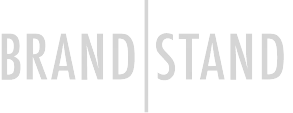November 8, 2023

Well, Apple finally did it. Rumors turned to reality. They ditched the Lightning connector for a USB-C port on the latest iPhone. It’s been a long time coming for the European Union which has supported the idea of a common connector for years. In June 2022, the European Union passed a law requiring all devices to be compatible with a USB Type-C charging port by late 2024, arguing that it will reduce electronic waste and save money for consumers. Apple had to comply or risk losing its 26 percent of the European smartphone market.
Why was the EU pushing for USB-C?
Reduction of electronic waste, bottom line. “European consumers were frustrated with multiple chargers piling up with every new device. Now they will be able to use a single charger for all their portable electronics,” said an EU Parliament spokesperson. By the end of 2024, all mobile phones, tablets and cameras sold in the EU will have to be equipped with a USB Type-C charging port.
Prior to the iPhone announcement, USB-C was already taking over the mobile device market for several reasons. The most obvious of these is its flexibility. It might seem like a small improvement, but USB-C’s flattened oval shape means that it can be plugged in whatever way round you hold the cable. But the real brilliance here is that the USB-C design is small and slim enough that it can be added to all sorts of different devices - from your smartphone or tablet through to your MacBook or Windows laptop.
Crucially, the USB-C (Universal Serial Bus) standard supports USB-C PD (Power Delivery), a relatively new fast-charging standard that can deliver up to 100 watts of power - enough for your average portable PC or Mac. USB-C circuit boards are specifically designed to handle these much higher wattage demands without overheating, which increases the overall safety for both devices themselves, and of course, consumers.
USB-C PD is supported by many iOS/Apple and Android/Google/Samsung devices. The group that originated the USB-C standard, the USB Implementers Forum (USB-IF), includes more than 700 companies as members, including: Apple, Dell, HP, Intel, Microsoft, and Samsung.
Transition from USB-A to USB-C
Not only is USB-C gaining traction with hoteliers, consumers, and manufacturers alike, but hotel brands are beginning to take an interest. Brand standards are being created incorporating USB-C into the specifications, a move that will see adoption soar still further.
Typically, the acceptance rate curve for new technologies, especially connectors, is usually relatively lengthy. But it is clear the electronics industry has aligned behind USB-C. Many manufacturers such as Samsung and Google had already implemented USB-C years ago. From smartphones to smartwatches, fitness trackers to cameras, and laptops to tablets, USB-C is the new king connector in town, and the hotel industry must respond in support, or risk being left behind.
The hotel industry is unique in that it inherently serves a wide variety of consumers with different technological preferences. Some hotel guests are early technology adopters and purchase the latest mobile device when it’sannounced, and others are several generations behind. The new iPhone 15 with USB-C will take time to penetrate the market, but as history has shown, it will happen, and hotels need to be ready to offer their guests a way to charge with USB-C. Studies have shown that hotel ratings are higher for those brands which offer their guest a way to charge their devices as easily as possible. By offering a dedicated and fully-safety-tested charging device, not only ensures customer satisfaction, but also reduces safety risk from improvised, non-standard charging setups. Most importantly, it encourages a seamless and friction-free customer experience.
Proactive iPhone accessory device manufacturers have been aware ofthe EU’s desire to move to a common connector for years and have been preparing for the change. They understand the importance of the EU’s market power and potential demand for USB-C. Entire product lines have required modifications and redesign to address the new charging standards. As soon as Tim Cook makes the official announcement, manufacturers scramble to solidify their product plans. It is a resource intensive exercise, and as with all positive technological changes, challenges arise for manufacturers and consumers in its implementation, but in the end unifying standards and simplifying components will ultimately lessen the environmental impact on the planet.
New USB-C products
Adhering to the new EU requirements, Brandstand has updated all the Cubie power charging products and alarm clocks to include a USB-C charging port. CubieTime, CubieBlue, CubieMini, CubieWink, CubieDuo, CubieTrio, CubieDuo+ and CubieTrio+ now include USB-C as standard. These upgraded versions are available and in stock.
The most recent product added to the line, Brandstand CubieVia 2.0, added two USB-C 20W charging ports in addition to its 10W Qi wireless charger and 2x standard Tamper Resistant outlets/sockets. The CubieVia 2.0 features surge protection, passed a UL Spill Test, and incorporates other design details specifically tailored to the hotel industry. All Cubie products include a security C-Clamp to prevent unauthorized removal, plus a right-angle pass-through plug that allows another device such as a lamp to plug in.
Another addition to Brandstand’s power lineup is the new CubieMod2.0 flush-mounted furniture power system which includes USB-C, USB-A, Tamper Resistant power outlets, and another variation that also includes a 10W Qi wireless charger.

What to do with old charging devices?
As your hotel replaces devices with the latest, up-to-date product and your hotel is left with a large collection of outdated, USB-A charging devices, don’t just throw them in the trash. Brandstand encourages end-of-life recycling with a certified electronics recycler.
Below are two resources for electronics recycling:
https://eridirect.com/about-us/our-locations/
https://www.republicservices.com/businesses/recycling
Other posts you might like:


